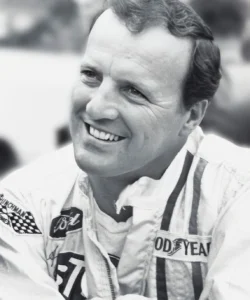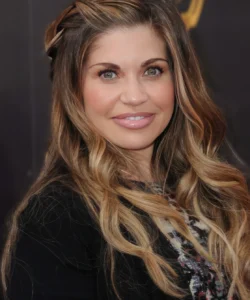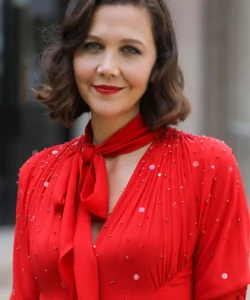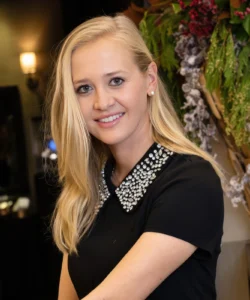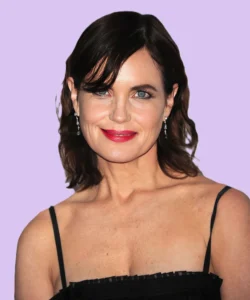Audrey Hepburn was a timeless British actress, humanitarian, and fashion icon. Renowned for her elegant grace, distinctive style, and captivating performances, she became one of Hollywood’s greatest stars. Later in life, she dedicated herself to extensive humanitarian work as a UNICEF Goodwill Ambassador.
Listen to an introduction about Audrey Hepburn
![]()
Name: Audrey Hepburn (born Audrey Kathleen Ruston; later Hepburn-Ruston)
Date of Birth: May 4, 1929
Height: 1.70 m (5 ft 7 in)
Place of Birth: Ixelles, Brussels, Belgium
Family:
- Parents:
- Joseph Victor Anthony Ruston (father): An English banker who later added “Hepburn” to his surname, creating Hepburn-Ruston.
- Baroness Ella van Heemstra (mother): A Dutch aristocrat and socialite, whose lineage included French and English nobility.
- Spouse(s):
- Mel Ferrer (married 1954; divorced 1968)
- Andrea Dotti (married 1969; divorced 1982)
- Children:
- Sean Hepburn Ferrer (son, with Mel Ferrer, born 1960)
- Luca Dotti (son, with Andrea Dotti, born 1970)
- Siblings: She had two half-brothers from her mother’s first marriage: Jonkheer Arnoud Robert Alexander “Alex” Quarles van Ufford and Jonkheer Ian Edgar Bruce Quarles van Ufford.
Profession: Actress, humanitarian, dancer, model.
Nationality: British (born to a British father and Dutch mother, holding British citizenship).
Religion: While raised in a relatively secular environment, she was known to be a spiritual person, deeply affected by her wartime experiences and later finding solace in her humanitarian work.
College or University Attended: Audrey Hepburn did not attend university in the traditional sense. She received extensive ballet training at:
- Arnhem Conservatory (Arnhem, Netherlands) during World War II.
- Sonia Gaskell’s ballet school (Amsterdam, Netherlands).
- Marie Rambert’s ballet school (London, England).
Biography and What Famous For:
Audrey Hepburn’s early life was marked by the hardships of World War II, which she spent in the German-occupied Netherlands. These experiences, including malnutrition and witnessing atrocities, profoundly shaped her future empathy and commitment to humanitarian causes. She initially aspired to be a ballerina, training intensely, but her height and the lasting effects of wartime malnutrition limited her professional ballet prospects.
She transitioned to acting, performing in chorus lines in West End musicals in London. Her breakthrough came when she was discovered by French writer Colette, who cast her in the title role of the Broadway play Gigi in 1951. Her performance earned her a Theatre World Award.
Her Hollywood debut in Roman Holiday (1953) opposite Gregory Peck made her an international star. Her portrayal of Princess Ann, a royal seeking a day of freedom, earned her an Academy Award for Best Actress, a Golden Globe, and a BAFTA Award, making her the first actress to win all three for a single performance.
Hepburn became synonymous with elegance and sophistication, gracing the silver screen in a series of iconic films:
- Sabrina (1954): A romantic comedy with Humphrey Bogart and William Holden.
- Funny Face (1957): A vibrant musical where she showcased her dancing abilities alongside Fred Astaire.
- The Nun’s Story (1959): A dramatic role for which she received critical acclaim.
- Breakfast at Tiffany’s (1961): Her portrayal of the quirky and enigmatic Holly Golightly became one of her most famous and enduring characters, solidifying her status as a global style icon.
- Charade (1963): A stylish romantic thriller co-starring Cary Grant.
- My Fair Lady (1964): Her controversial casting as Eliza Doolittle nevertheless led to one of her most beloved performances in the classic musical.
- Wait Until Dark (1967): A suspenseful thriller that earned her another Academy Award nomination, showcasing her versatility.
Beyond her acting career, Hepburn was renowned for her timeless fashion sense, heavily influenced by her close collaboration with designer Hubert de Givenchy. Her slender physique, gamine haircut, and elegant attire created an enduring image.
In her later years, Hepburn largely retired from acting to devote her time to family and, most significantly, to humanitarian work. Inspired by her own wartime experiences and a deep desire to help children, she became a UNICEF Goodwill Ambassador in 1988. She traveled extensively, visiting some of the poorest communities in Africa, South America, and Asia, raising awareness and funds for children in need. Her unwavering dedication to UNICEF earned her the Presidential Medal of Freedom in December 1992, just a month before her death.
Audrey Hepburn is remembered not only as a legendary screen actress and fashion icon but also as a compassionate humanitarian whose efforts made a profound impact on countless lives. She is one of only 16 individuals who have won an Academy, Emmy, Grammy, and Tony Award (EGOT).
Have participated:
- Films (Selected iconic roles):
- Roman Holiday (1953)
- Sabrina (1954)
- War and Peace (1956)
- Funny Face (1957)
- Love in the Afternoon (1957)
- The Nun’s Story (1959)
- Breakfast at Tiffany’s (1961)
- The Children’s Hour (1961)
- Charade (1963)
- My Fair Lady (1964)
- How to Steal a Million (1966)
- Two for the Road (1967)
- Wait Until Dark (1967)
- Robin and Marian (1976)
- Always (1989) – her final film role
- Stage Productions:
- High Button Shoes (1948, chorus girl)
- Sauce Tartare (1949, chorus girl)
- Gigi (1951, Broadway, title role)
- Ondine (1954, Broadway, title role)
- Humanitarian Work:
- UNICEF Goodwill Ambassador (1988–1993)
- Undertook missions to Ethiopia, Sudan, Somalia, Bangladesh, Vietnam, Turkey, Venezuela, Ecuador, Guatemala, Honduras, and other countries to advocate for children’s rights and raise awareness for humanitarian crises.
- Testified before the U.S. Congress on behalf of UNICEF.
- Participated in the World Summit for Children.
- Hosted Danny Kaye International Children’s Award ceremonies.
- Awards and Honors (Selected):
- Academy Award for Best Actress (Roman Holiday, 1954)
- Tony Award for Best Actress in a Play (Ondine, 1954)
- BAFTA Award for Best British Actress (3 wins for Roman Holiday, The Nun’s Story, Charade)
- Golden Globe Award for Best Actress – Motion Picture Drama (Roman Holiday, 1954)
- Grammy Award for Best Spoken Word Album for Children (Audrey Hepburn’s Enchanted Tales, 1994, posthumous)
- Emmy Award for Outstanding Individual Achievement – Informational Programming (Gardens of the World with Audrey Hepburn, 1993, posthumous)
- Cecil B. DeMille Award (Golden Globe, 1990)
- Jean Hersholt Humanitarian Award (Academy Award, 1993, posthumous)
- Presidential Medal of Freedom (1992)
- Life Achievement Award from the Screen Actors Guild (1992)
- Inducted into the International Best Dressed List Hall of Fame.
- Ranked as the third-greatest female screen legend by the American Film Institute.



















































